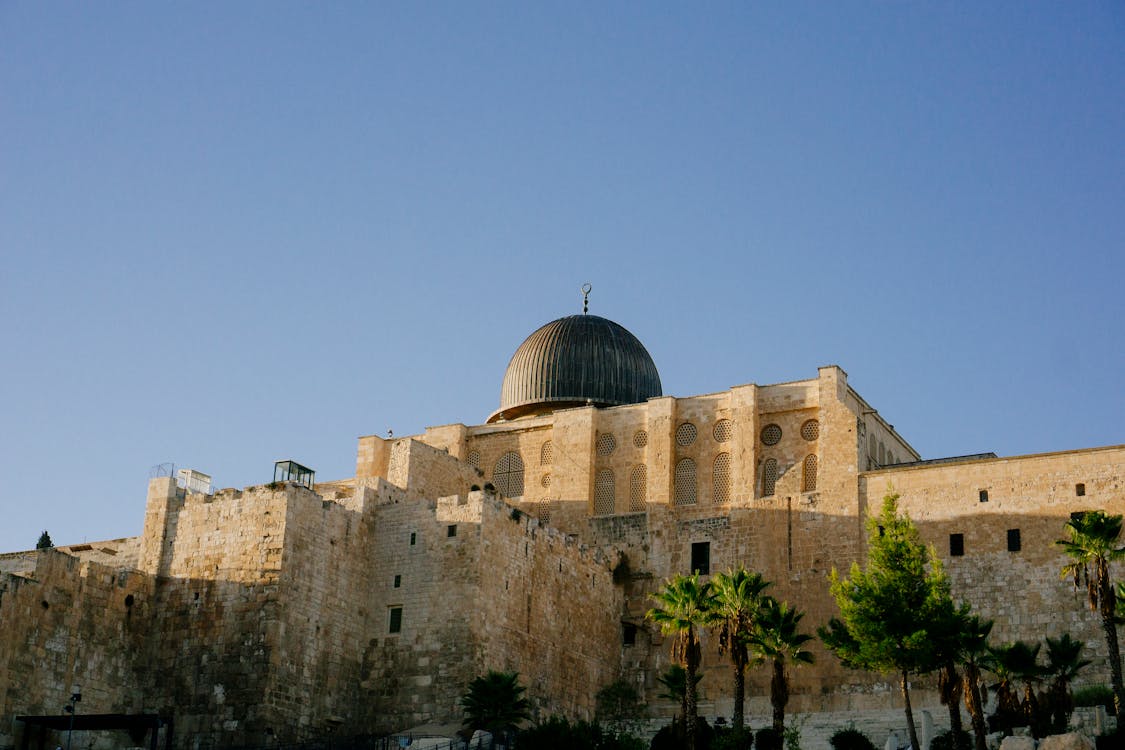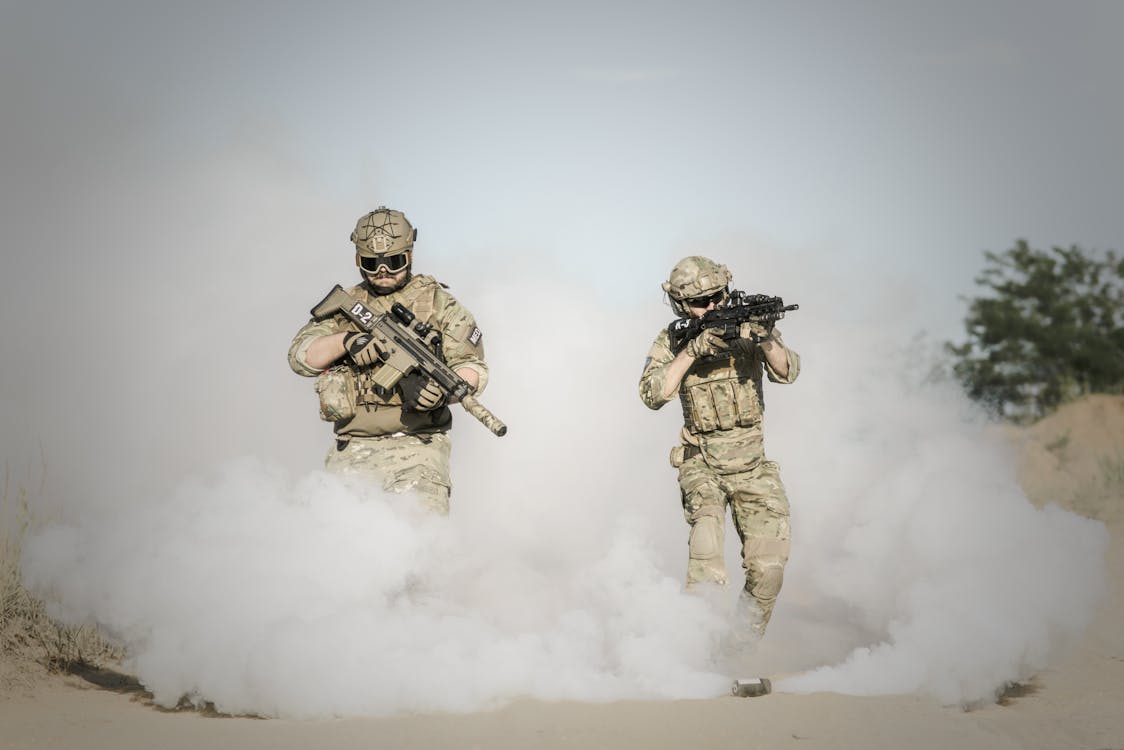On October 7, an escalation of violence began with the launch of rockets by Hamas against Israel and with an unprecedented operation by its fighters against southern Israel. For its part, Israel responded by bombing hundreds of targets in the Gaza Strip. Amnesty International has reminded that deliberately targeting civilians, carrying out disproportionate attacks and indiscriminate attacks that kill or injure civilians are war crimes . For more information in our News section .
The case of Israel contains a sad paradox. On the one hand, the State of Israel exists because a United Nations resolution grants it the right to exist. It is the first modern State created in this way. On the other hand, the State of Israel does not stop systematically violating each and every one of the resolutions of that same organization that gave it life and that recognized the legitimacy of its existence.
Israel represents a people who suffered atrocious crimes in their flesh. Years later,it is responsible for constant violations of international law and for subjugation, repression and oppression constituting war crimes against another marginalized and repudiated people: the Palestinians.
The creation of the State of Israel and the demographic problem
Zionism is a nationalist movement that pursues the creation of a Jewish and democratic State in the Promised Land of Judaism, located in historical Palestine. Moved by economic, national-religious and humanitarian reasons, Jews began to emigrate to this Promised Land in 1881. The first large-scale Jewish wave took place in the 1930s, in the middle of the British Mandate, as a consequence of Nazi persecution.
As the years went by, the Jewish communities settled in historic Palestine grew and, with this, clashes between the Palestinians who demanded independence and the Jews who considered that territory as their own increased. Faced with this scenario, the United Kingdom went to the United Nations in 1947, which issued Resolution 181 (II). This resolution divided the region into two states: one Arab and the other Jewish. The latter was assigned 54% of the territory. Jerusalem, a key city for both cultures, was assigned “corpus separatum” status under an international regime.
Wars of 1948 and 1967
In 1948, Israel won the War of Independence and went on to occupy 77% of the territory, including west Jerusalem. The Gaza Strip was under Egyptian rule and the West Bank (including East Jerusalem) was under Jordanian rule.
On the one hand, Israel believes that the Arab powers sought to destroy the newly created State of Israel. Some critical historians consider that the Arab powers intervened to protect the Palestinian population, which already before Israel's independence suffered displacement through Israeli military conquest plans such as Plan Dalet. Others consider that the Arab powers saw in the UN partition plan a new example of Western colonialism.
For the Palestinians this war was the "Nakba" (disaster or catastrophe). More than half of the Arab population was expelled or fled the territory. Other United Nations sources even speak of 85%. Between 700,000 and 750,000 Palestinians were expelled from their homes, lost their land and became refugees in neighboring Arab countries, or displaced in Gaza and the West Bank. This legal category was extended to their descendants and, more than 70 years later, the number of refugees exceeds five million . It is the oldest refugee population in modern history and one of the main focuses of debate in the conflict, since UN Resolution 194, of 1948, recognizes the right of return and compensation of Palestinian refugees from that conflict. . And he also recognizes it to his descendants. Seventy-three years later, the resolution remains unfulfilled.
Years later, in 1967, after the Six-Day War, Israel began to occupy all of Gaza and the West Bank , generating a new exodus of Palestinians of approximately half a million people. This war is the official beginning of an occupation and colonization through illegal settlements of the Occupied Palestinian Territories that has lasted for more than 50 years.
East Jerusalem
One of the great controversies in this conflict is East Jerusalem. Its importance lies in the Old City, which houses shrines of great importance to three religions: Islam, Judaism and Christianity. In addition, it was one of the epicenters of the escalation of the conflict in May 2021.
For Palestinians, East Jerusalem is the capital of a free Palestinian state. For Israelis, Jerusalem is their legitimate capital. Therefore, Israel annexed East Jerusalem in 1980 “officially” through the Jerusalem Law, establishing Israel's capital in a “whole and unified” Jerusalem.
The Oslo and Camp David Accords
The Oslo Accords , signed in 1993, are part of a peace process that began in Madrid in 1991. At this time, the recognition of the State of Palestine by the UN and the first Palestinian intifada against the occupation took place. The Accords provided for five years to reach a permanent peace agreement, but it was not achieved. In 2000 it was tried again with the Camp David Accords. But it was not achieved either. There was no agreement on the return of refugees, on the status of Jerusalem, on territorial adjustments, or on Israeli security issues.
The Oslo Accords did not recognize the entire West Bank as an autonomous Palestinian region and fragmented it into three areas:
- Zone A: under civil and military control of the Palestinian National Authority.
- Zone B: under Palestinian civilian control but under Palestinian-Israeli military control.
- Zone C: under Israeli civil and military control. When you hear about the occupied West Bank, reference is usually made to the latter area, although there are also areas of the second area.
Of the three zones, zone A is the smallest. In it, as in zone B , are the main cities, refugee camps and Palestinian towns, which account for around 95% of the population, but only 40% of the land.
Area C , under Israeli civilian and military control, comprises the remaining 60% of West Bank land, including all land reserves and all major roads, but is largely inaccessible to the Palestinian population. Key resources for life, such as water or sanitation, pass through or are in this third zone.
Furthermore, since 2002, Israel has erected a series of walls, blockades, border and crossing posts and restricted areas to separate areas and the entire West Bank from Israel. The so-called walls have a double objective: to facilitate travel and communications between the settlements of Israeli settlers and to torpedo the freedom of movement of the Palestinian population, isolating them in the first two areas, with them barely having access to anything else.
Gaza, the largest prison in the world
Gaza is the largest prison on earth. According to Antonio Guterres himself, Secretary General of the United Nations, it is “ hell on earth .” One of the regions where the humanitarian situation is extremely worrying and where 1.6 million people live, of which more than half are minors. Gaza is one of the most densely populated places in the world.
38% of the population lives in poverty. 54% of the inhabitants are food insecure and more than 75% are aid beneficiaries. 35% of its agricultural land and 85% of its fishing waters are fully or partially inaccessible due to Israeli military measures. Every day between 50 and 80 million liters of partially treated wastewater are dumped into the sea. More than 90% of the water in the Gaza aquifer is not drinkable. About a third of the items on the essential medicines list are out of stock.
And we could continue. It has been blocked since 2007 by order of Israel and thousands of people risk their lives smuggling goods across the Egyptian border as a result of Israeli restrictions. The population of Gaza is isolated from the rest of the Palestinian territories. During the years that the blockade has lasted, many of its residents have never had the opportunity to leave the territory.
“In Gaza, 38% of the population lives in poverty. 54% of the inhabitants are food insecure and more than 75% are aid beneficiaries. 35% of its agricultural land and 85% of its fishing waters are totally or partially inaccessible. More than 90% of the water in the Gaza aquifer is not drinkable. And about a third of the items on the essential medicines list are out of stock. ”
The population of Gaza is made up mostly of Palestinians who were forcibly expelled from their homes and lands from 1948 onwards, as well as their descendants. Only about 150,000, 15% of the population, were able to remain within Israel, in many cases as displaced people, who in 1952 gained citizenship. These people and their descendants are the so-called "Arab-Israelis" and currently make up 20% of the population.
Since 2007, Gaza has been de facto governed by Hamas, a terrorist organization according to multiple countries and international institutions, including the European Union. One might wonder, therefore, if the international community, with its lethargy and passivity, is responsible for a terrorist organization being one of the main, if not the main, actor in the defense of the Palestinian people. Even more so if we take into account that Hamas also has no particular qualms about using the Palestinians themselves as human shields.
In 2018, the Great March of Return took place, a series of protests in the Strip that along the fence demanded the right of people displaced in Gaza and refugees in other neighboring countries to return to their homes in the West Bank. The protests ended in brutal Israeli repression, which left hundreds of people dead and thousands injured.
The policy of demolitions and destruction
There are two key laws in the eviction policy in East Jerusalem: the Absentee Property Law of 1950 and the Legal and Administrative Affairs Law of 1970.
The first prohibits the Palestinian population from reclaiming property they lost during the 1948 conflict . Neither those who were expelled outside the borders nor those relocated within the West Bank, specifically in East Jerusalem, as is the case of the residents of Sheikh Jarrah or Silwan, can claim them.
The second exclusively allows Jews to claim land and property supposedly owned by Jews in East Jerusalem before the establishment of the State of Israel in 1948. This 1970 Law has allowed Jewish entities with an unclear legal status to appropriate different neighborhoods in Jerusalem. This, including Sheikh Jarrah. These entities then sold the property rights or transferred its management to settler organizations that have no ties to the alleged original Jewish owners. Finally, these settler organizations have filed eviction lawsuits against Palestinians residing in said properties. The Palestinians, for their part, cannot claim them or have a similar law because the 1950 Law prohibits it. It is a perfect legal trap that basically allows Jews to reclaim property they lost during the 1948 war, while prohibiting Palestinians from doing so.
The policy of forced evictions and destruction of property is also carried out in the rest of the West Bank, but under another pretext. Instead of applying laws, it applies military ordinances, such as 1797 or 1252. The first serves to demolish Palestinian structures with a 96-hour notice , limiting the margin and possibilities of the Palestinians to claim anything. The second is used to confiscate “mobile structures” without prior notice within 90 days of their construction. Illegal Israeli settler settlements quickly notify the Government as soon as they see a new Palestinian structure, and then the Israeli administration is mobilized by these military orders. The Palestinian structures demolished or confiscated are residences, sanitation or hygiene centers, health centers, shelters or water supply facilities.
The circle of the policy of evictions and destruction is also closed in the West Bank with the cataloging of “shooting zones” for military training. Since 1970, Israel has declared that 18% of the West Bank is only suitable for military training, making it dangerous to live there and consequently no one can do so. Coincidentally, these firing zones cover strategic areas due to the resources they contain and/or are areas where especially vulnerable Palestinian communities live (or lived) that lacked access to healthcare, electricity, education or water.
Settlement policy
The settlements have been expanding since the 1967 War. Two types are distinguished: official settlements, which have "official authorization" from the Government, and outposts, which do not have it.
The settlements, protected by all the infrastructure related to the West Bank Walls, and connected to each other by roads only accessible to settlers, are also a major focus of violence for the Palestinian population.
The settlers who live in the official (and illegal) settlements choose to live there for more practical than ideological reasons, based on the good quality of life they can obtain there. The investment and level of development of the settlements is such that they are here to stay, with no signs that they will disappear in the medium or long term.
For their part, the settlers residing in the outposts move for ideological reasons. They consider that land legitimately won in 1967, having settled on uninhabited lands that belong to them by divine and historical right and mandate. The land is yours because the Torah says so. Everything else does not matter. And that is why they consider the violence they exert against the Palestinians around the settlements to be legitimate and necessary.
Impunity
The Security Council and other United Nations bodies have issued a whole series of resolutions and decisions, in addition to those already cited in this article, regarding settlements, the annexation of East Jerusalem, the Syrian Golan Heights or the annexation of facto of the West Bank through land confiscation and its increasing settlement activities, as well as with respect to the occupation and Israel's constant failure to comply with all these resolutions.
“ Israel has only fully complied with 0.5% of the human rights resolutions presented to it ”
Israel has only fully complied with 0.5% of the human rights resolutions presented to it , and there have been many.
The main problem of the modern world is not the lack of laws, but the absence of political will. As Secretary General Antonio Guterres said “there can be no peace without justice, nor justice if impunity prevails ,” nor can there be peace if international law is not respected.
Therefore, the end of Israel's impunity only requires a clear political will from the international community that implies accountability and the end of the culture of exceptionalism. The General Assembly, the Human Rights Council, the High Commissioner for Human Rights and the Secretary General himself have spoken on the matter, but the international community, which has a series of measures to enforce accountability, does not assert what their own laws, decisions and binding humanitarian obligations compel them to do. Without decisive intervention by the international community, the status quo of the occupation can be maintained indefinitely as a consequence of large power imbalances.
It is true that during the last two years it seems that the international paradigm is changing a little, but the process of international recognition of Israel's crimes continues to be too slow and continues with more shadows than lights in a context that always favors the Jewish country.







